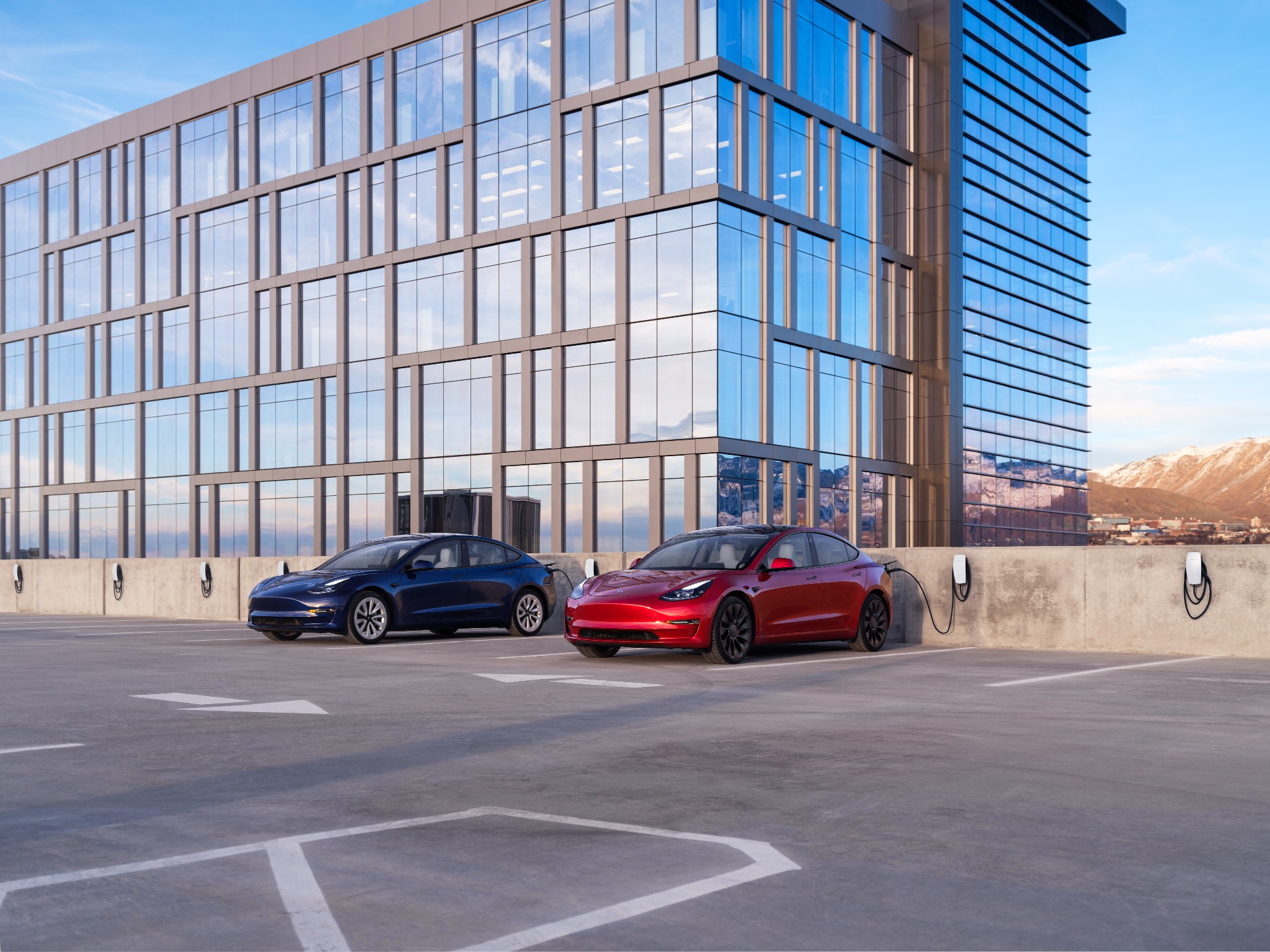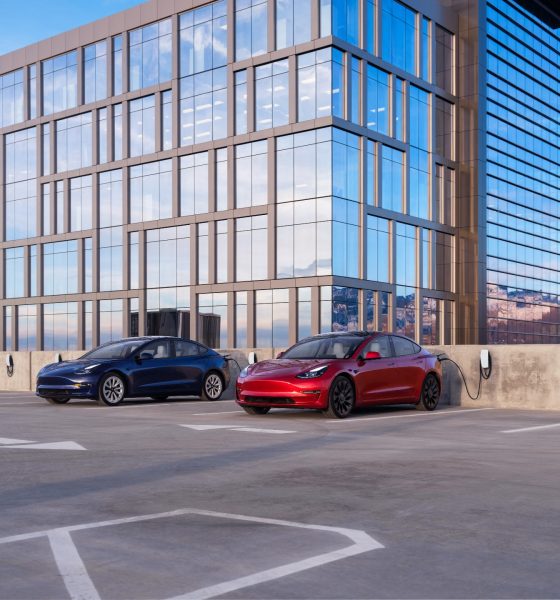Electric vehicle transaction prices pulled back slightly in July, according to research from Kelley Blue Book, which was released earlier today. However, EV prices remain up nearly 19 percent over the past year, insinuating that electric powertrains and their price parity with other vehicles still remain out of reach.
The KBB study indicated the average cost of a transaction for any new electric vehicle in July was $66,645, down from $68,206 in June. This is a 2.3 percent reduction from June to July. However, July 2022, compared to the same month in 2021, is a completely different story.
Year-over-year, transaction prices have increased 18.8 percent, up from the average transaction price of $56,110 in July 2021.
“The average price for a new electric vehicle – over $66,000, according to Kelley Blue Book estimates – remains well above the industry average and more aligned with luxury prices versus mainstream prices,” the publication said regarding their market analysis.
“The new-vehicle market today is a seller’s market,” KBB Research Manager Rebecca Rydzewski told Teslarati. “Demand remains healthy, and inventories, particularly with fuel-efficient vehicles and EVs, are extremely tight. In these conditions, shoppers can’t expect much price relief.”
Electric Vehicle Price Parity
Since practically the beginning of the mass EV movement, automakers have been trying to figure out ways to make electric cars that are priced at levels comparable to gas vehicles.
Unfortunately, the EV supply chain is not yet mature enough to have affordable models across the board. Automakers rely on suppliers for some car parts, including batteries and battery packs, which make up the bulk of an EV’s cost.
EV prices soared in early 2022 as the metals used in battery cells increased substantially. This put significant pressure on automakers who were sourcing batteries from suppliers, whose profit margins decreased as material costs increased.
Tesla’s battery supply constraint is ending, price parity with gas cars is at hand
Carmakers have shifted their strategies to accommodate the increased prices. Tesla, Rivian, and other automakers shifted to different cell chemistries from vehicles with less range and performance. Meanwhile, car companies have worked to establish long-term mining deals to alleviate the uncertainty of material costs.
Tesla
Tesla’s average transaction cost dropped by 1.8 percent from June to July. However, its costs have increased by 20.5 percent compared to July 2021. This is higher than any other automaker KBB assessed. The next closest was Honda, which has seen an increase of 17 percent over the past year, with a 2.7 percent increase occurring from June to July 2022.
The industry average was 11.9 percent.
Rivian
Rivian did not have an active production model during this time last year. Its average transaction price did increase by 0.4 percent from June to July.
Polestar
Polestar’s prices have decreased from July 2021. The automaker has seen a 5.7 percent decrease in average transaction price since last year. Its change from June to July was only a few dollars.
“Long term, we do believe EV prices will moderate as supply chains improve and more lower-priced models are introduced, Rydzewski added. “Until then, though, we expect EV prices to stay more aligned with luxury-vehicle prices. Recent EV price hikes from Tesla, Ford, and others indicate the market direction. EVs, for the most part, are still costly to source and often feature the latest—expensive!—technology.”
I’d love to hear from you! If you have any comments, concerns, or questions, please email me at joey@teslarati.com. You can also reach me on Twitter @KlenderJoey, or if you have news tips, you can email us at tips@teslarati.com.

Elon Musk
Elon Musk and Tesla AI Director share insights after empty driver seat Robotaxi rides
The executives’ unoccupied tests hint at the rapid progress of Tesla’s unsupervised Robotaxi efforts.

Tesla CEO Elon Musk and AI Director Ashok Elluswamy celebrated Christmas Eve by sharing personal experiences with Robotaxi vehicles that had no safety monitor or occupant in the driver’s seat. Musk described the system’s “perfect driving” around Austin, while Elluswamy posted video from the back seat, calling it “an amazing experience.”
The executives’ unoccupied tests hint at the rapid progress of Tesla’s unsupervised Robotaxi efforts.
Elon and Ashok’s firsthand Robotaxi insights
Prior to Musk and the Tesla AI Director’s posts, sightings of unmanned Teslas navigating public roads were widely shared on social media. One such vehicle was spotted in Austin, Texas, which Elon Musk acknowleged by stating that “Testing is underway with no occupants in the car.”
Based on his Christmas Eve post, Musk seemed to have tested an unmanned Tesla himself. “A Tesla with no safety monitor in the car and me sitting in the passenger seat took me all around Austin on Sunday with perfect driving,” Musk wrote in his post.
Elluswamy responded with a 2-minute video showing himself in the rear of an unmanned Tesla. The video featured the vehicle’s empty front seats, as well as its smooth handling through real-world traffic. He captioned his video with the words, “It’s an amazing experience!”
Towards Unsupervised operations
During an xAI Hackathon earlier this month, Elon Musk mentioned that Tesla owed be removing Safety Monitors from its Robotaxis in Austin in just three weeks. “Unsupervised is pretty much solved at this point. So there will be Tesla Robotaxis operating in Austin with no one in them. Not even anyone in the passenger seat in about three weeks,” he said. Musk echoed similar estimates at the 2025 Annual Shareholder Meeting and the Q3 2025 earnings call.
Considering the insights that were posted Musk and Elluswamy, it does appear that Tesla is working hard towards operating its Robotaxis with no safety monitors. This is quite impressive considering that the service was launched just earlier this year.
Elon Musk
Starlink passes 9 million active customers just weeks after hitting 8 million
The milestone highlights the accelerating growth of Starlink, which has now been adding over 20,000 new users per day.

SpaceX’s Starlink satellite internet service has continued its rapid global expansion, surpassing 9 million active customers just weeks after crossing the 8 million mark.
The milestone highlights the accelerating growth of Starlink, which has now been adding over 20,000 new users per day.
9 million customers
In a post on X, SpaceX stated that Starlink now serves over 9 million active users across 155 countries, territories, and markets. The company reached 8 million customers in early November, meaning it added roughly 1 million subscribers in under seven weeks, or about 21,275 new users on average per day.
“Starlink is connecting more than 9M active customers with high-speed internet across 155 countries, territories, and many other markets,” Starlink wrote in a post on its official X account. SpaceX President Gwynne Shotwell also celebrated the milestone on X. “A huge thank you to all of our customers and congrats to the Starlink team for such an incredible product,” she wrote.
That growth rate reflects both rising demand for broadband in underserved regions and Starlink’s expanding satellite constellation, which now includes more than 9,000 low-Earth-orbit satellites designed to deliver high-speed, low-latency internet worldwide.
Starlink’s momentum
Starlink’s momentum has been building up. SpaceX reported 4.6 million Starlink customers in December 2024, followed by 7 million by August 2025, and 8 million customers in November. Independent data also suggests Starlink usage is rising sharply, with Cloudflare reporting that global web traffic from Starlink users more than doubled in 2025, as noted in an Insider report.
Starlink’s momentum is increasingly tied to SpaceX’s broader financial outlook. Elon Musk has said the satellite network is “by far” the company’s largest revenue driver, and reports suggest SpaceX may be positioning itself for an initial public offering as soon as next year, with valuations estimated as high as $1.5 trillion. Musk has also suggested in the past that Starlink could have its own IPO in the future.
News
NVIDIA Director of Robotics: Tesla FSD v14 is the first AI to pass the “Physical Turing Test”
After testing FSD v14, Fan stated that his experience with FSD felt magical at first, but it soon started to feel like a routine.

NVIDIA Director of Robotics Jim Fan has praised Tesla’s Full Self-Driving (Supervised) v14 as the first AI to pass what he described as a “Physical Turing Test.”
After testing FSD v14, Fan stated that his experience with FSD felt magical at first, but it soon started to feel like a routine. And just like smartphones today, removing it now would “actively hurt.”
Jim Fan’s hands-on FSD v14 impressions
Fan, a leading researcher in embodied AI who is currently solving Physical AI at NVIDIA and spearheading the company’s Project GR00T initiative, noted that he actually was late to the Tesla game. He was, however, one of the first to try out FSD v14.
“I was very late to own a Tesla but among the earliest to try out FSD v14. It’s perhaps the first time I experience an AI that passes the Physical Turing Test: after a long day at work, you press a button, lay back, and couldn’t tell if a neural net or a human drove you home,” Fan wrote in a post on X.
Fan added: “Despite knowing exactly how robot learning works, I still find it magical watching the steering wheel turn by itself. First it feels surreal, next it becomes routine. Then, like the smartphone, taking it away actively hurts. This is how humanity gets rewired and glued to god-like technologies.”
The Physical Turing Test
The original Turing Test was conceived by Alan Turing in 1950, and it was aimed at determining if a machine could exhibit behavior that is equivalent to or indistinguishable from a human. By focusing on text-based conversations, the original Turing Test set a high bar for natural language processing and machine learning.
This test has been passed by today’s large language models. However, the capability to converse in a humanlike manner is a completely different challenge from performing real-world problem-solving or physical interactions. Thus, Fan introduced the Physical Turing Test, which challenges AI systems to demonstrate intelligence through physical actions.
Based on Fan’s comments, Tesla has demonstrated these intelligent physical actions with FSD v14. Elon Musk agreed with the NVIDIA executive, stating in a post on X that with FSD v14, “you can sense the sentience maturing.” Musk also praised Tesla AI, calling it the best “real-world AI” today.










